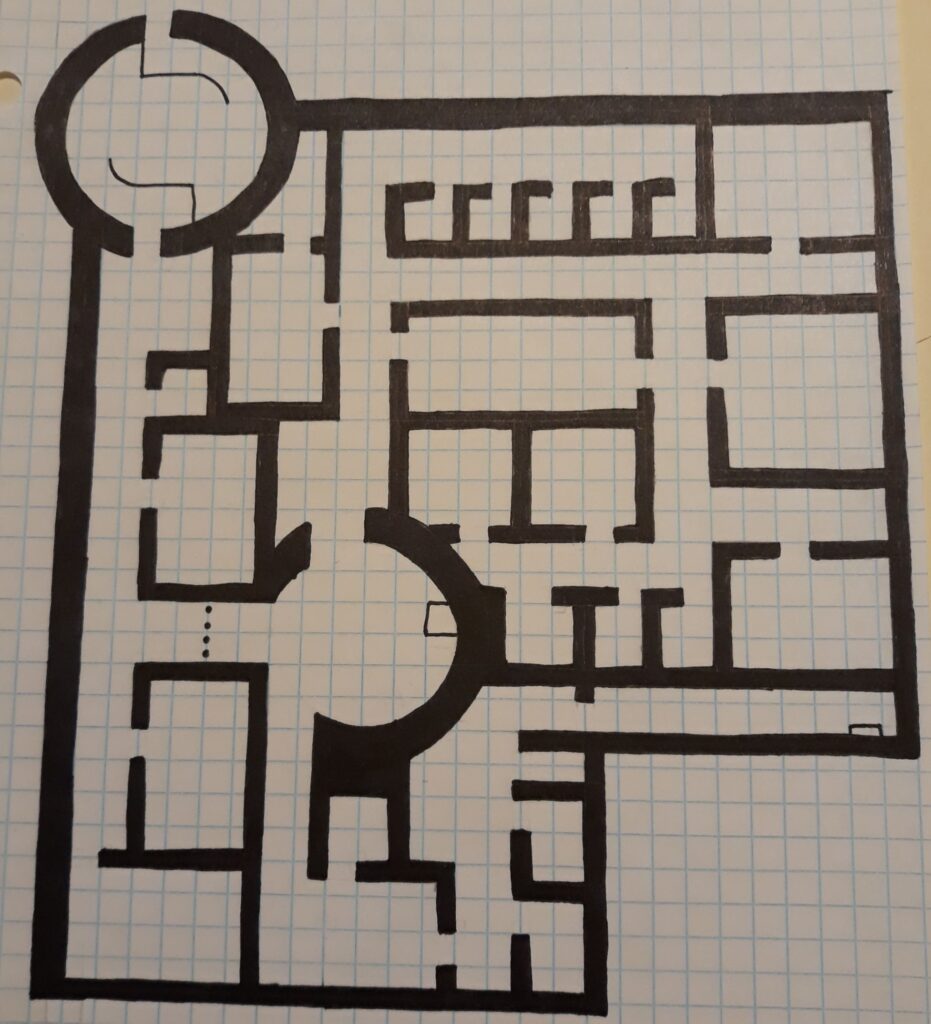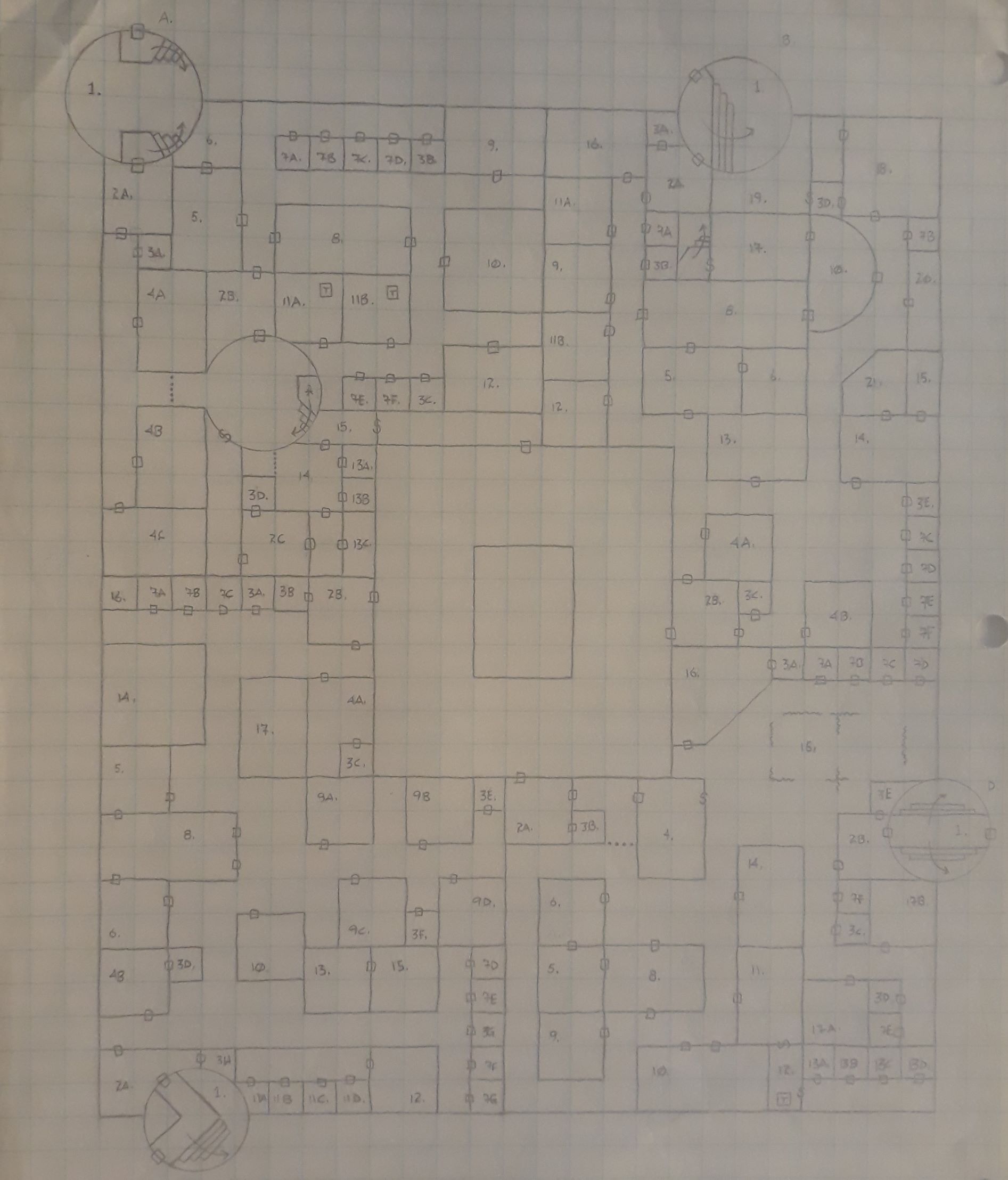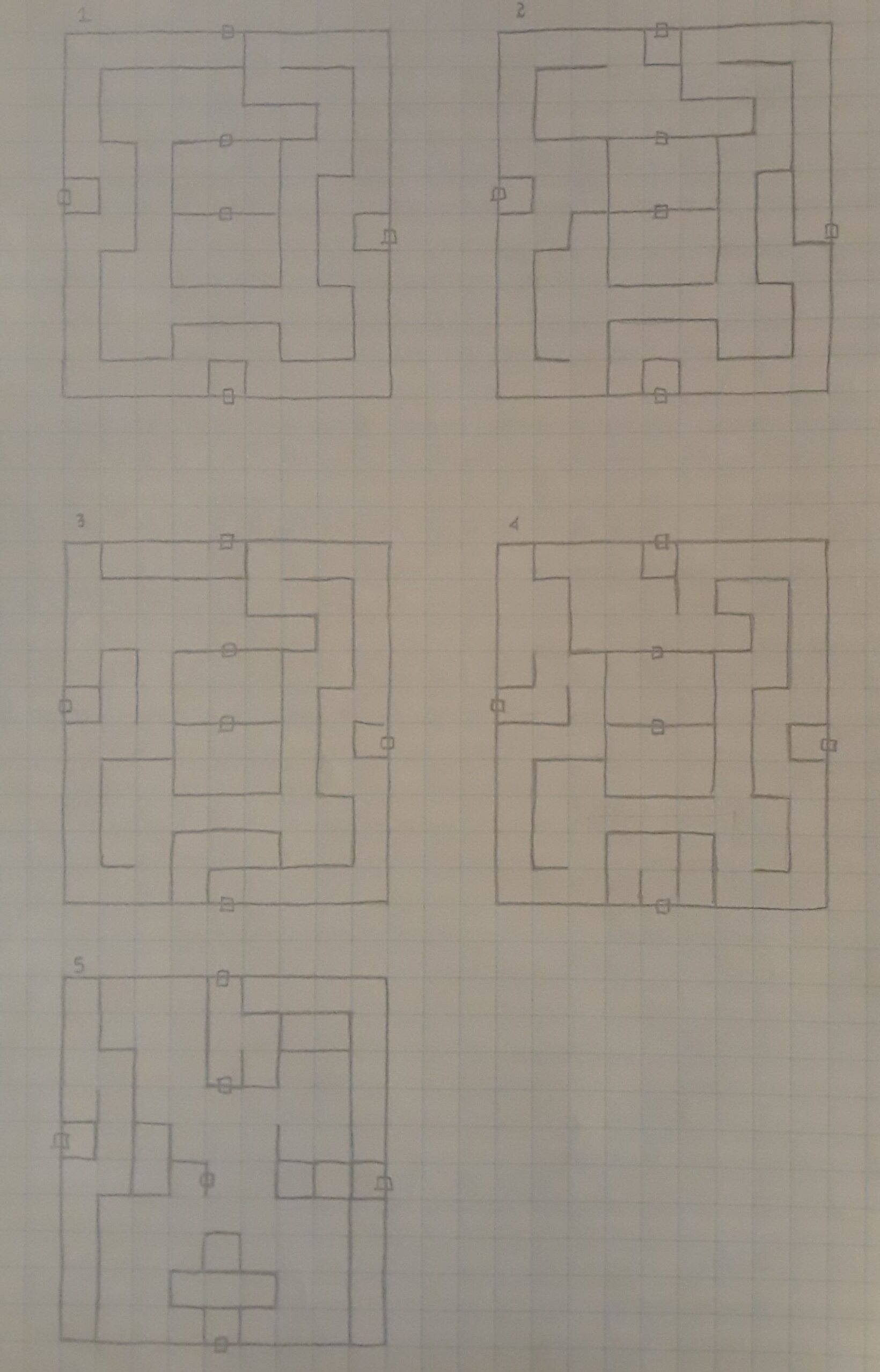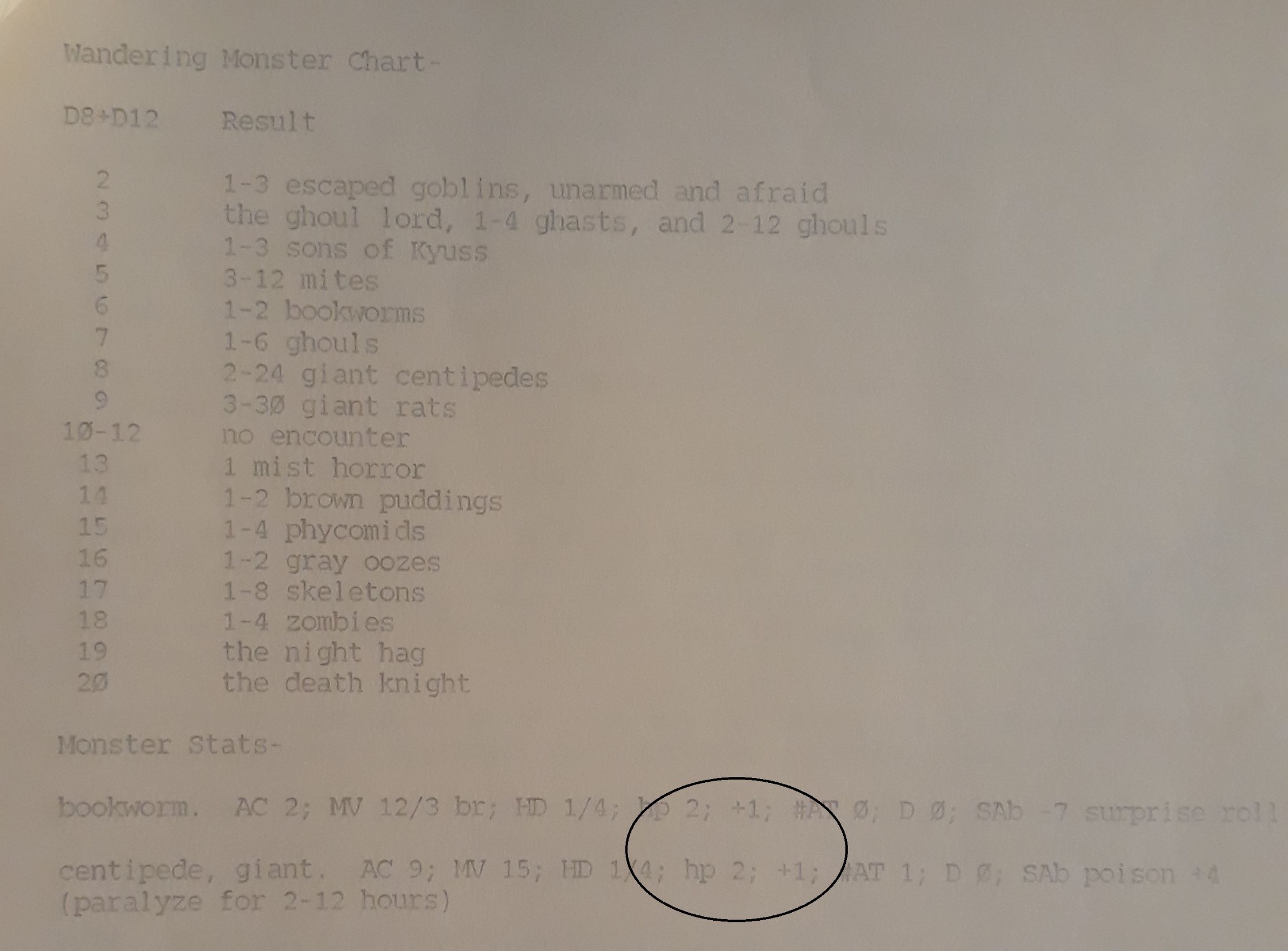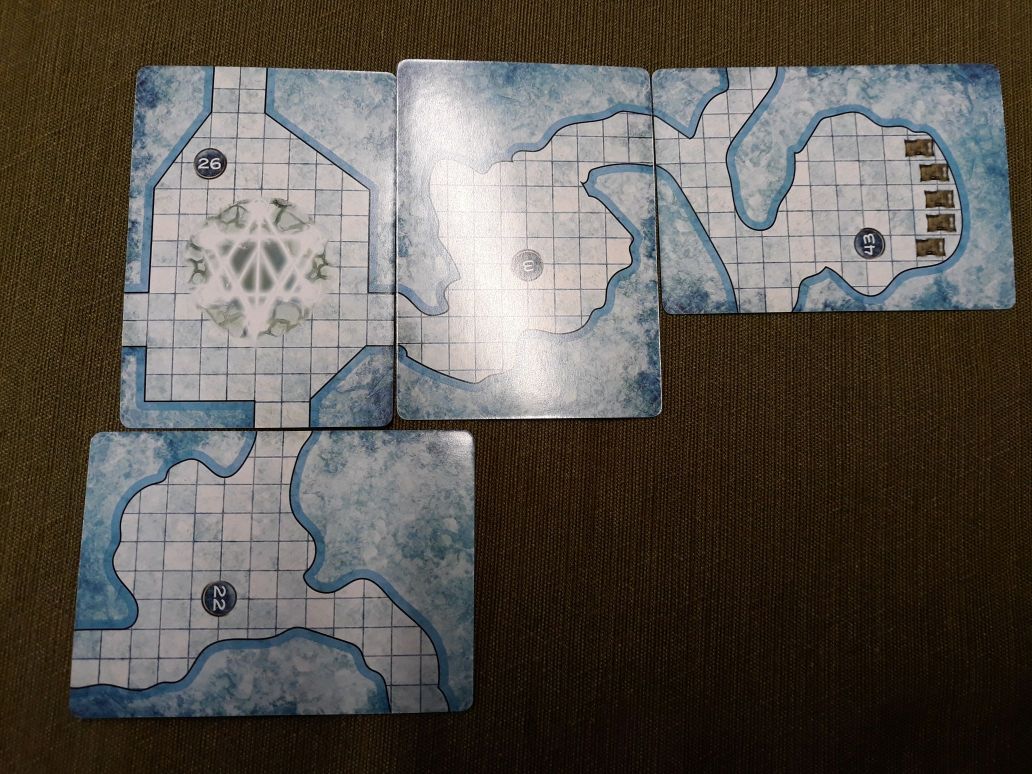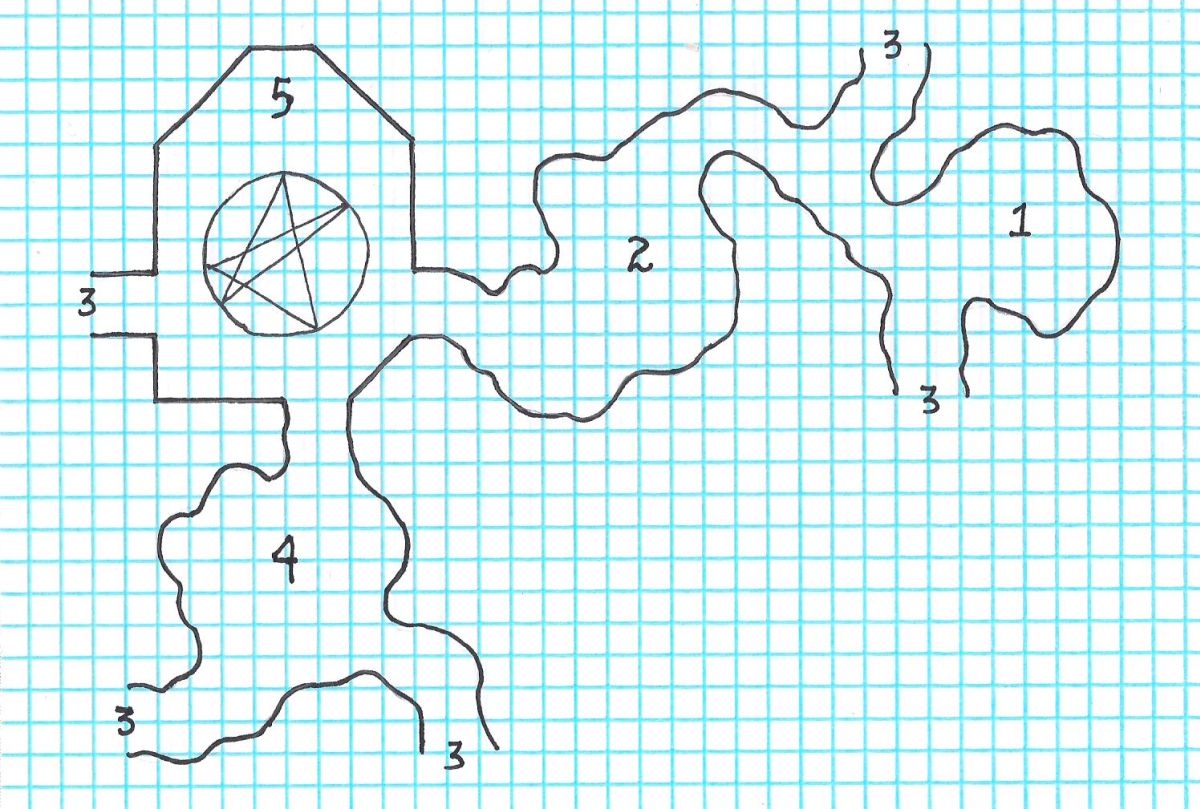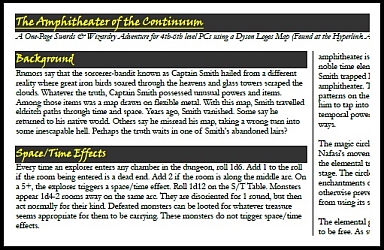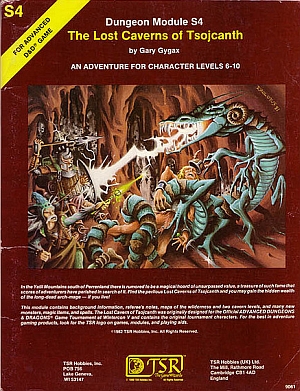
Again, I’m not quite sure I’m a reflective enough gamer to complete the 30-Day D&D Challenge in its literal intent. I’ve run so many adventures for just about every version of D&D that I’m not sure I can pick a favorite one. I can, however, at least pick out one adventure that I’ve enjoyed, specifically The Lost Caverns of Tsojcanth. I’ve run this delightful module three different times that I remember. I’ve never had a party of adventurers complete the module with what could be called rousing success. Two parties failed; the third survived but unleashed a horrible evil.
The first time I ran Lost Caverns was in high school. I don’t remember everyone who played. Fred was there, probably running Blake. Big Greg was there, and he definitely ran a cleric of Poseidon. (Why Poseidon was a deity in the World of Greyhawk is a mystery.) There were other players, perhaps Little Greg, the other Mark, and Ben. Someone was playing a cleric of Thor.
Regardless, the adventure proceeded apace through the lesser caverns until the party reached the gorgimera cavern. Aside from the gorgimera, there were stairs leading from this cavern down to the greater caverns. I described how the gorgimera took wing as the party entered, maneuvering to attack. For some reason I’ve forgotten, the players sort of panicked, especially Big Greg. The cleric of Poseidon had a necklace of prayer beads that included the bead of summoning. So, Big Greg, thinking that the party needed direct divine assistance against the fearsome gorgimera, used this bead to call forth Poseidon himself.

I described how Poseidon appeared in all his divine majesty. How the stones shook. How the cavern grew larger to accommodate his awesome stature. How Poseidon casually swatted the gorgimera from the air, killing it, and then asked, “For what great purpose have you summoned me?”
This was not what Big Greg expected to happen, and Poseidon was displeased to have been summoned for so trivial as task of slaying a mere gorgimera. In tribute, he demanded one magic item from each party member. The cleric of Thor balked. Poseidon reminded his cleric (Big Greg’s PC) that “[n]o cleric [of a Greek mythos deity] may have dealings with clerics of other sects for any reason (on non-hostile terms) as this is considered a minor transgression by their deity and punishable by the stripping away of the third and higher levels of spells for a lunar month” (1E Deities & Demigods). Poseidon demanded his cleric teach the cleric of Thor a lesson in manners to avoid this punishment. This resulted in a cleric versus cleric smackdown which Big Greg’s cleric won. Poseidon took as many magic items as he wanted from the defeated cleric of Thor.
Then, just before leaving, Poseidon used his prerogatives as the god of natural disasters to have an earthquake strike the caverns, collapsing the paths back out of the lesser caverns to the surface and leaving the party no choice but to head down to the greater caverns despite their weakened state.
The party continued on. They eventually faced Drelzna, and the survivors managed to return to the surface, but poorer and perhaps wiser than when they went in. Lost Caverns tore through their resources, and I think the cleric of Thor was dead by the end of the adventure.

The second time I ran Lost Caverns I was stationed at either Fort Bragg, North Carolina, or Schofield Barracks, Hawaii. I don’t remember who the players were, which might mean I wasn’t running the adventure for my regular gaming groups at those duty stations. (That would be either the group with Wayne Royals or with Lewis Pulsipher at Fort Bragg, or the group with Ron Chance [no relation] at Schofield.)
Anyhoo, what I do remember transpired in the greater caverns, so I’m guessing the group did okay in the lesser caverns. I think it was during the fight against the demonic bar-lguras that one of the PCs died. The party retreated and, by accident, ended up in the cave with the chasme demons. Since the party had just suffered a defeat, I decided the chasme would be more conversational than confrontational.
For some reason, the players decided to trust the demonic fly monsters. I mean, what could go wrong? Right?
Turns out, plenty went wrong. The adventurers lamented the loss of their party member, and asked if the chasmes could help. One of them assured the PCs that, yes, it could restore the dead to life, but the process took a little time. The party agreed, and so the chasme rammed its proboscis into the corpse’s chest and pumped in a load of demonological goo. (By this time, I was just making stuff up as I went along.) The chasme told the adventurers to take the corpse with them, and after a while he would revive.
So, the adventurers took the corpse with them, and after a while the cadaver exploded, releasing several more chasme that had spawned from the demonological goo. At this time, the other chasme and the bar-lgura ambushed the party. During the resulting slaughter of PCs, two of the adventurers fled in terror, desperately hoping to find some safe haven. They found it by blundering into the magical cavern which teleported them into an alternate dimension valley populated by centaurs. Without the means to return to the cavern, and with the rest of the party dead, that particular foray into the caverns came to a screeching halt.
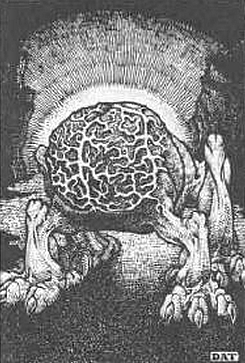
The last time I ran Lost Caverns was after I converted the module to 3E/3.5E for Man Day. The adventure became part of the campaign’s metaplot that pitted the PCs against a gradually revealed plot by forces loyal to Nerull, Erythnul, and Hextor to conquer a large swath of the World of Greyhawk. I replaced Drelzna with a monster called the Abyssal Mind, which turned out to be a fiendish vampiric intellect devourer.
This last group was the most successful, completing the modified module with no PC deaths (as far as I can remember). Unfortunately, they did fail to defeat the Abyssal Mind, and that horrible monster escaped its prison in the greater caverns to spread its evil on the surface. This was sort of recurring motif in that particular campaign. The PCs would defeat the forces of badness, but some element of badness would escape in order to cause trouble later on, such as when the adventurers were manipulated into freeing the Deathless One, a lich in service to Nerull.
But that’s another story.
Tags: 30 Day D&D Challenge, dungeon crawls, monsters
